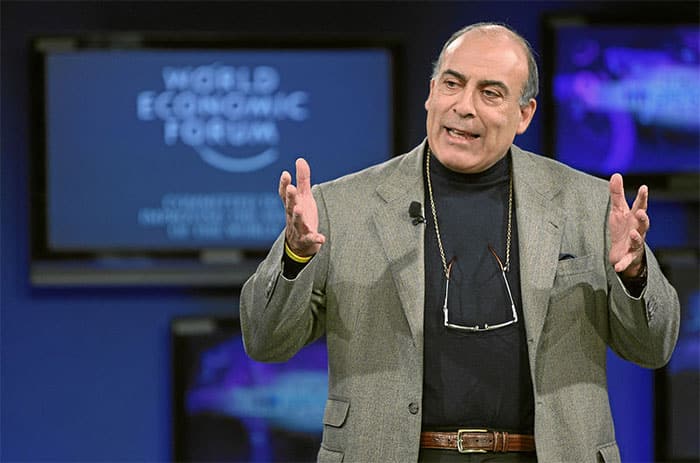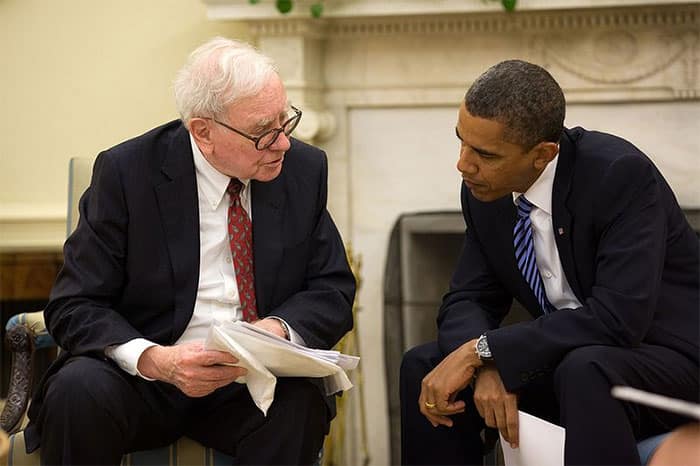Creating A Culture of Breakthrough Innovation and Growth

Culture matters, enormously. Your company’s culture is its most critical source of business success or failure – it is dominant over strategy, innovation and leadership. Companies supported by an aligned culture and strategy significantly outperform their competitors.
“The strategy your company employs will only succeed when it is powerfully aligned to your culture.”

The commonly used metaphor of the iceberg helps us to visualise the relationship between strategy and culture. What lies above the waterline is everything in your organisation which is visible and of which we are conscious such as the structure of the organisation, the strategy, the goals. But the biggest and most important part of this iceberg is what lies below the surface. This is what really determines the success of your organisation. The submerged part of the iceberg is by its nature invisible and unconscious. We are unaware of it but it is very powerful. This encapsulates your organisation’s self-sustaining patterns of behaving, feeling, thinking, and believing – in other words the culture.
When culture and strategy are aligned and everything below the waterline supports everything above it, your businesses is more likely to succeed and be transformed. When culture and strategy are misaligned this seriously undermines performance and limits the strategy’s success. It is well known that most strategies fail at the execution stage, not at formulation. So no matter how great your strategy, the fact is, your culture and your people always make the difference. As Peter Drucker so famously stated, “Culture eats strategy for breakfast.” That is why it is so important to focus and work on culture. But it is an area that is often neglected or poorly managed.
According to 84% of the more than 2,200 global participants in the 2013 Culture and Change Management Survey by Booz & Company, culture is critically important to business success. However, there is a clear disparity between the way companies view culture and the way they treat it. Less than half of participants saw their companies effectively managing culture, and more than half said a major cultural overhaul was needed.
Interestingly, 60% of C-suite executives see culture as a bigger success factor than either strategy or operating models.
In his latest book The Culture Cycle, Professor James L. Heskett of Harvard Business School concludes that effective culture can account for 20-30% of the differential in corporate performance when compared with “culturally unremarkable” competitors.
Even more remarkable were the findings of Kotter and Heskett’s landmark study. It documented results for 207 large U.S. companies in 22 different industries over an eleven-year period. They reported that companies that managed their cultures well saw revenue increases of 682% versus 166% for the companies that did not manage their cultures well – stock price increases of 901% versus 74% – and net income increases of 756% versus 1%. These results are staggering and highlight the impact of culture on performance and the bottom-line.
Kotter and Heskett found that strong corporate cultures facilitate adaptation to a changing world, highly value employees, customers, and owners and encourage leadership from everyone in the firm. So if customers need change, a firm’s culture almost forces people to change their practices to meet the new needs. And anyone, not just a few people, is empowered to do just that.
Culture, innovation and growth
In markets characterised by rapid change and the ceaseless quest for the faster, better way to operate, one of the most prized corporate attributes is innovation. This is confirmed by Kantar Worldpanel which predicts that 75% of growth for consumer products companies in the next decade will come through new product development. But many of the natural byproducts of corporate success – hierarchy, routinisation, the minimisation of risk – can stifle innovation.
This year’s Global Innovation 1000 study shows that spending more on R&D is not what drives results. The most crucial factors are strategic alignment and a culture that supports innovation.
“effective culture can account for up to 30% of the differential in corporate performance when compared with ‘culturally unremarkable’ competitors.”

It is crucial to nurture an innovative spirit among team members. They should exhibit a combination of creative zeal, problem solving, risk taking and teamwork
The elements that make up a truly innovative company include: a focused innovation strategy, a winning overall business strategy, deep customer insight, great talent, and the right set of capabilities to achieve successful execution. More important than any of the individual elements, however, is the role played by corporate culture which can be viewed as the glue that bonds them all together. Yet according to the results of the study, only about half of all companies say their culture robustly supports their innovation strategy. Moreover, about the same proportion say their innovation strategy is inadequately aligned with their overall corporate strategy.
The study also found that companies with both highly aligned cultures and highly aligned innovation strategies have 30% higher enterprise value growth and 17% higher profit growth than companies with low degrees of alignment. Underperforming companies have much to gain if they can close these gaps and achieve higher degrees of cultural and strategic alignment.
Strong cultures don’t happen by accident or are only achievable by organisations with exceptional leaders or extraordinary products. What many companies don’t realise is that there are a number of practical “tools” (concepts and techniques designed to change the way individuals think and act) and processes that are proven to increase both individuals and the company’s future success and to build and sustain a strong customer-centric culture.
Companies with strong innovation cultures think innovatively in everything they do and are constantly searching for better or more effective ways of doing things. The optimal outcomes are achieved when each person in the organisation channels their creativity and actions toward: business growth, people development, an empowering and supportive culture, providing innovative tools and processes for effectiveness and executional excellence.

“today, for all of us in business and government and civil society, the choice is between innovation and irrelevancy. You either innovate or you become irrelevant.”
Strengthening consumer and customer focus, accountability for results, teamwork, and sense of urgency along with instilling an entrepreneurial, winning spirit are the key to achieving success. An innovative culture cultivates engagement, enthusiasm, challenges people to take risks in a safe environment, fosters learning, and encourages independent thinking. Effective innovation means that customers buy your products because they are distinctive and deliver benefits your customers really want.
While many people associate innovation with new products, people are the most important drivers of breakthrough innovation. Great people do great things and build outstanding businesses. That is why your major focus should be on the development of your people.
Barry Calpino, Kraft’s Vice President for Breakthrough Innovation says “You can have the greatest processes in the world, but usually when you break down companies that are successful in innovation, usually the talent and the team are at the top of the list. We have teams, talent and culture all over Kraft that are thinking about what’s possible for these brands. They’re not thinking what’s not possible….”.
The effectiveness of your people can be exponentially increased as they gain exposure to world class tools and processes, and selectively incorporate and utilise them. These tools include leadership, management and technical tools. Staff, managers and leaders should be encouraged to create, explore and devise new strategies to further develop leadership and technical skills. It is the leaders role to provide people the tools and resources necessary in order to open minds to possibilities of innovation.
For innovation to thrive it must be in a culture that energises and ensures that creative thinking is constantly occurring. Creativity, curiosity and a genuine openness are essential for breakthrough innovation. Creating a culture of trust where risks can be taken without a culture of blame and perceived failure is valuable as long as the people benefit through learning and discovery.
It is crucial to nurture an innovative spirit among team members. They should exhibit a combination of creative zeal, problem solving, risk taking and teamwork. Team members need to share in the past successes and not be afraid to mutually address past failures using effective communication methods that do not assign blame.
Coca-Cola Chairman and CEO, Muhtar Kent, says “One of the things I always share with Coke people is the need to remain constructively discontent. Today, for all of us in business and government and civil society, the choice is between innovation and irrelevancy. You either innovate or you become irrelevant.”
However, possibly the single most important factor in driving culture, innovation and performance is positive and effective leadership behavior. Transformational leaders invent new futures that are not constrained by past performance, or even current circumstance, and which inspire others to create those futures with them.
When A.G. Lafley became chief executive officer of P&G, the company was introducing new brands and products with a commercial success rate of 15% to 20%, today their company’s success rate runs between 50% and 60%. There’s no mystery to P&G’s rapid growth and continuing success – it all comes down to Lafley’s focus on developing a culture of radical innovation.
With open innovation as a guiding light, every member of P&G, no matter their role, became potential innovators. When Lafley took over, 85% of P&G’s employees said they did not see themselves as innovators. Instead, innovation was left up to the engineers and the Research & Development department. P&G had been playing it safe – there were no fresh perspectives among their innovators.
P&G’s capability with diversity management (called intellectual diversity) was a key driver of their innovation efforts. According to Lafley’s book The Game Changer, he believed that intellectual diversity (drawing people in with different ways of thinking), team diversity (diverse minds pointing at the same goal), and leadership (leaders who are able to select the right diversity of people) were key to innovation.
To make every employee an innovator, P&G changed its social climate. Now, every employee understands that they’re innovators, no matter what they’re doing. The sales people have a say, the marketing department has a say – everybody has a say. Lafley puts it this way: “Today, all P&G employees are expected to understand the role they play in innovation. Even when you’re operating, you’re always innovating — you’re making the cycles shorter, or developing new commercial ideas, or working on new business models. And all innovation is connected to the business strategy”.
As a leader you set the culture for the business and the right culture is a valuable and hard-to-replicate source of advantage. If there is something wrong with the culture of your business you may need to take a look at what you are paying attention to.

“transformational leaders invent new futures that are not constrained by past performance, or even current circumstance, and which inspire others to create those futures with them.”
Unilever CEO, Paul Polman, has overseen an impressive cultural transformation. When he was appointed as the head of Unilever in 2008, the group had been underperforming for a decade and was in dire need of fresh ideas. He saw a chance to align Unilever’s way of working with an improved corporate culture and his own ideals of responsible capitalism. He insists that running the firm with close attention to its environmental and social impact is not an act of charity but of self-interest, properly conceived. This led him to launch the Unilever Sustainable Living Plan. It aims not only to reduce Unilever’s environmental footprint and increase its “positive social impact”, but also to double the size of the business to €80 billion while halving its environmental impact by 2020.
As part of his turnaround plan Polman has introduced a number of bold changes to the way the business is run. Cancelling quarterly reporting and changing the way employees are incentivized were two key ways of moving the company away from concentrating on the short-term. The company instituted 30-day action plans for things that were not working, to create a bias for action. They also stepped up their investments. In 2008- 9, when many companies were being cautious and laying off staff, they invested heavily in IT systems, training, research and development, and stepped up new launches in new markets. They have nurtured a culture which allows their people to take decisions instead of waiting for rules and regulations, which stifle innovation and “Authentic purpose” has been embedded at the core of Unilever’s DNA and permeates into all its brands. “In any company, you have to go back to what drives people.” he says. “Brands with a purpose and that are values-led over time are going to be by definition more successful.”
Today, the new Unilever culture of openness and performance is winning support both from the company and the market. Since the plan was unveiled in November 2010, Unilever’s shares have risen by more than 40%.
Sales are up – 3.6% year-on-year in the first quarter of 2014 – and Unilever is meeting its green targets. One of the unexpected consequences of this transformation is that Unilever has become one of the world’s most sought-after employers – it is now the third most-searched-for company on LinkedIn globally, after Google and Apple.

“it takes 20 years to build a reputation and five minutes to ruin it. If you think about that you’ll do things differently.”
Warren Buffett, Chairman and CEO of Berkshire Hathaway and the most successful investor of the 20th century, is vey clear that an important part of his role is to set the culture he wants and often refers to the importance of company culture in his letters to shareholders. “Our final advantage is the hard-to-duplicate culture that permeates Berkshire. And in business, culture counts… cultures self-propagate.”
Professor Cunningham believes in his book Berkshire Beyond Buffett: The Enduring Value of Values that the key to Mr. Buffett’s success lies in a managerial philosophy that has been unchanged since the company’s inception. Commentary tends to focus on the diversity of Berkshire’s subsidiary companies – their vastly different sizes, profit margins and industry genres – to explain its success, but Mr. Cunningham says this analysis overlooks the “extraordinary unity of corporate culture” at Berkshire.
“Intuitively, people don’t expect conglomerates – vast, diverse organisations – to have discernible corporate cultures, but Berkshire has a distinctive one, based on a core set of shared values,” Mr. Cunningham says. “In my research, I profiled Berkshire’s 50 main subsidiaries, probing them for the beliefs and practices that define them.”
In doing so, he says, he found a set of nine principles shared across every company – all “intangible values that translate into economic gain,” including thrift, integrity, autonomy and permanence.
The upshot: A culture can make or kill a company. If, as a business leader, managing corporate culture isn’t already at the top of your to-do list, it should be. As Edgar Schein, author of Organizational Culture and Leadership put it “The only thing of real thing of importance that leaders do is to create and manage culture. If you do not manage culture it manages you and you may not even be aware of the extent to which this is happening.” Getting the corporate culture right can transform businesses and unleash explosive breakthrough innovation and growth.
******************
(Writing by Dr Bart Sayle, CEO and Nick Hawker, Principal Consultant, The Breakthrough Group. Bart Sayle is the author of Riding the Blue Train: A Leadership Plan for Explosive Growth; editing by Caroline Mittermair)
You can follow Bart Sayle on Linkedin & Twitter: @BartSayl; Nick Hawker on Linkedin & Twitter: @EcoChemex.
The Breakthrough Group unleashes innovation, specialising in accelerated business growth, sustainability and culture transformation, with over 20 years experience working with leading brands including Mars, Danone, Unilever, Ferrero, Pepsico, Coca-Cola, Mondelez, Bayer, British Airways and P&G.
[Image: Cyclists, Muhtar Kent, Paul Polman, Warren Buffett and Barrack Obama]
—————–
All views and opinions expressed are those of the original authors, columnists and other contributors and not necessarily those of the CEOWORLD Magazine. The CEOWORLD Magazine is an independent and neutral platform dedicated to facilitating dialogue around the key issues and challenges encountered by business leaders and managers around the world. We welcome opposing views and diverse perspectives. To submit a article or column, contact us info@ceoworld.biz. Due to the volume of submissions received, we cannot guarantee publication, however you are invited to express your opinion in the comment section below.
Add CEOWORLD magazine to your Google News feed.
Follow CEOWORLD magazine headlines on: Google News, LinkedIn, Twitter, and Facebook.
This report/news/ranking/statistics has been prepared only for general guidance on matters of interest and does not constitute professional advice. You should not act upon the information contained in this publication without obtaining specific professional advice. No representation or warranty (express or implied) is given as to the accuracy or completeness of the information contained in this publication, and, to the extent permitted by law, CEOWORLD magazine does not accept or assume any liability, responsibility or duty of care for any consequences of you or anyone else acting, or refraining to act, in reliance on the information contained in this publication or for any decision based on it.
Copyright 2024 The CEOWORLD magazine. All rights reserved. This material (and any extract from it) must not be copied, redistributed or placed on any website, without CEOWORLD magazine' prior written consent. For media queries, please contact: info@ceoworld.biz
SUBSCRIBE NEWSLETTER








